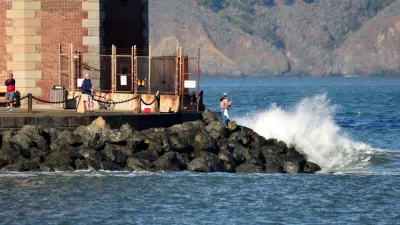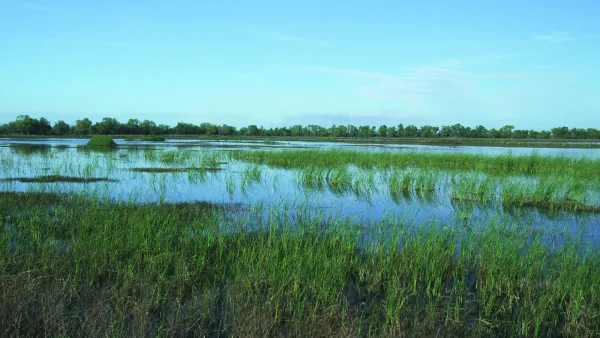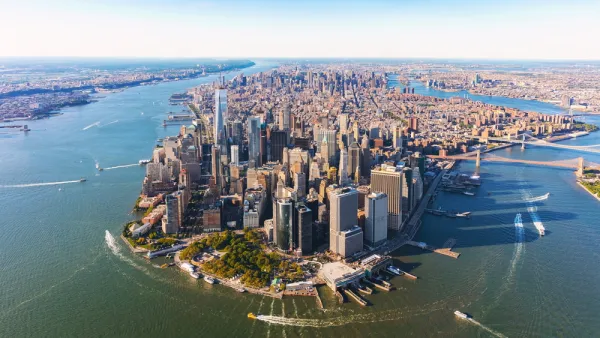The San Francisco Chronicle gives feature-length, in-depth treatment to the looming dangers of sea level rise, which are more likely to encroach on the built and natural environments of the Bay Area with every passing year.

John King writes of a profound challenge facing the San Francisco Bay Area: "to accommodate the bay’s impending expansion as it rises because of our warming planet."
An abundance of scientific studies says the bay’s average tide could climb several feet or more by 2100, with most change coming in the decades after 2050. It’s an inexorable shift that threatens low-lying neighborhoods as well as the fish, birds and wildlife that need tidal flats to survive.
After an aperture that tends toward the dire, King sounds a note of optimism: the Bay Area is presented with a window of time to prepare for the effects of climate change. Moreover, there are already success stories that exemplify the larger project facing the Bay Area. A concern emerging from those success stories, however, is how many years of planning, review, and construction required to deliver their benefits. To create the additional wetlands necessary to "absorb the worst impacts of sea-level rise later this century," according to King, "the Bay Area must overcome a protective mind-set that values time-consuming review processes above all else."
The political work King prescribes will have to take place at the Bay Conservation and Development Commission, created in 1965 for a different era of environmental and conservation concerns. The commission has taken steps, as recently as May of this year, but King notes how that effort still falls short of changing existing regulations.
The article is a long read, with a whole package of infographics, beautiful photography, and videos. The San Francisco Chronicle promises more coverage from King on the challenges of sea level rise, including the perils facing the city’s crumbling Embarcadero, the potential rebirth of the South Bay’s salt marshes and the creation of a small city on man-made Treasure Island. If the first article is any indicator, expect more thoughtful dialogue between the necessary steps to prepare the Bay Area for sea level rise and the forces that must be overcome, some human and some environmental, in the process.
FULL STORY: Rising reality

Analysis: Cybertruck Fatality Rate Far Exceeds That of Ford Pinto
The Tesla Cybertruck was recalled seven times last year.

National Parks Layoffs Will Cause Communities to Lose Billions
Thousands of essential park workers were laid off this week, just before the busy spring break season.

Retro-silient?: America’s First “Eco-burb,” The Woodlands Turns 50
A master-planned community north of Houston offers lessons on green infrastructure and resilient design, but falls short of its founder’s lofty affordability and walkability goals.

Test News Post 1
This is a summary

Analysis: Cybertruck Fatality Rate Far Exceeds That of Ford Pinto
The Tesla Cybertruck was recalled seven times last year.

Test News Headline 46
Test for the image on the front page.
Urban Design for Planners 1: Software Tools
This six-course series explores essential urban design concepts using open source software and equips planners with the tools they need to participate fully in the urban design process.
Planning for Universal Design
Learn the tools for implementing Universal Design in planning regulations.
EMC Planning Group, Inc.
Planetizen
Planetizen
Mpact (formerly Rail~Volution)
Great Falls Development Authority, Inc.
HUDs Office of Policy Development and Research
NYU Wagner Graduate School of Public Service



























